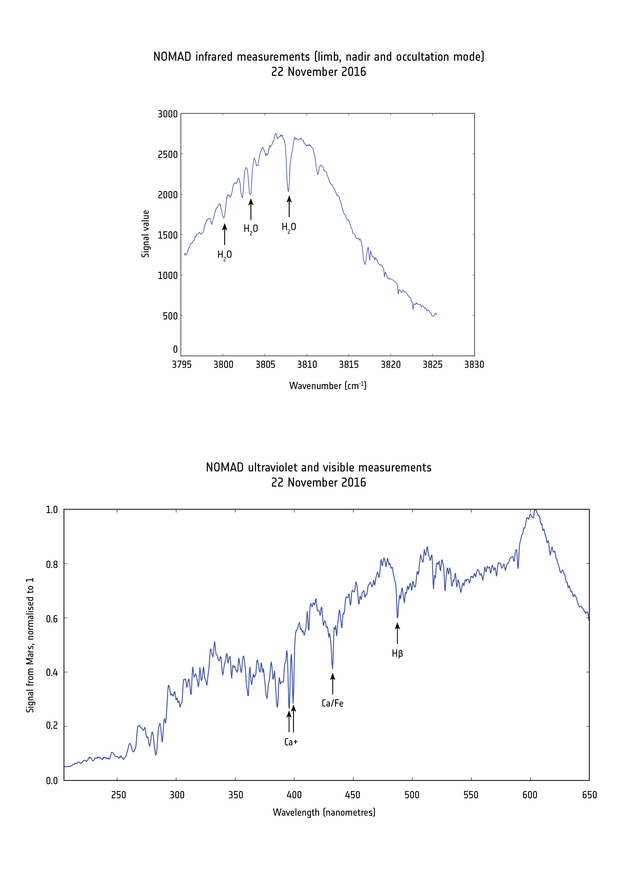First data confirm that NOMAD will be able to put an end to the methane mystery on Mars
NOMAD´s data confirm the perfect functioning of the instrument, co-developed by the Institute of Astrophysics of Andalusia (IAA-CSIC)
The ExoMars (ESA) mission has been in orbit around Mars since 19 October. Over the past two weeks, the first test observations of the instruments have been made. NOMAD, a spectrograph co-designed by the Institute of Astrophysics of Andalusia (IAA-CSIC) to solve the so-called methane problem on Mars has sent its first data confirming the excellent performance of the instrument.
"This is the first data after the long journey in space and also the first in its nominal configuration, since the position of the Schiaparelli module affected the quality of NOMAD´s data", says Julio Rodríguez, engineer responsible of the participation of the Institute of Astrophysics of Andalusia (IAA-CSIC) in NOMAD.

EXOMARS, NOMAD AND THE METHANE
On 14 March, the European Space Agency (ESA) launched ExoMars, a mission to study the atmosphere and subsurface of the red planet and, specifically, the search for gases with possible biological importance. NOMAD is a key part of the ExoMars orbital specifically designed to study methane, a gas mainly produced by living organisms on Earth and found on the Martian atmosphere in 2004.
One explanation for the existence of methane on Mars would lie in the existence of organisms that, like some living beings on Earth, expel methane. However, most researchers point out that the origin of methane is rather due to processes in the Martian subsurface.
Among these could be chemical reactions by which olivine, a common mineral in the red planet, become serpentine, a process in which methane is released but requires the presence of liquid water. Or methane could also be formed by destabilizing clathrates (ice containing gas inside), either by thermal changes or by a cataclysmic phenomenon, such as a meteorite impact.
FIRST METHANE GLOBAL MAP OF MARS
NOMAD is a high resolution spectrograph with a very high capacity to measure minor compounds -up to a hundred times better than the devices used so far- that will use the technique of solar occultation: observing how the sun hides behind the limb of the planet (ie, observing continuously sunsets and sunrises from its orbit), scientists can deduce the components that form the atmosphere.
This instrument can thus generate the first global and accurate map of methane in the atmosphere of Mars, and also trace it, observing it against the surface of the planet to find the source of production or disappearance of the gas.
"The test observations show that, indeed, we will be able to measure with great precision the abundance and location of minor compounds such as methane, and to understand the processes that occur in the atmosphere and on the surface of Mars," says José Juan López Moreno (IAA-CSIC), co-principal investigator of NOMAD.
NOMAD instrument has been carried out by an international team of scientists and engineers and has an important contribution from the Institute of Astrophysics of Andalusia (IAA-CSIC), which has been in charge of the realization and design of the instrument electronics, the Central computer, power supply and software.
Marte y el misterio del metano from IAA-CSIC on Vimeo.
Instituto de Astrofísica de Andalucía (IAA-CSIC)
Unidad de Divulgación y Comunicación
Silbia López de Lacalle - sll[arroba]iaa.es - 958230532
http://www.iaa.es
http://www-divulgacion.iaa.es

